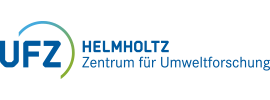Details zur Publikation |
| Kategorie | Textpublikation |
| Referenztyp | Zeitschriften |
| DOI | 10.1007/s11030-009-9190-4 |
| Volltext | Shareable Link |
| Titel (primär) | Quantitative and qualitative models for carcinogenicity prediction for non-congeneric chemicals using CP ANN method for regulatory uses |
| Autor | Fjodorova, N.; Vračko, M.; Tušar, M.; Jezierska, A.; Novič, M.; Kühne, R.
|
| Quelle | Molecular Diversity |
| Erscheinungsjahr | 2010 |
| Department | OEC |
| Band/Volume | 14 |
| Heft | 3 |
| Seite von | 581 |
| Seite bis | 594 |
| Sprache | englisch |
| Supplements | Supplement 1 |
| Keywords | Counter propagation artificial neural network; In silico; Quantitative structure-activity relationship; Qualitative (categorical) models; Quantitative (continuous) models; Rodent carcinogenicity; Tumorgenic dose TD50 |
| Abstract | The new European chemicals regulation Registration, Evaluation, Authorization and Restriction of Chemicals entered into force in June 2007 and accelerated the development of quantitative structure-activity relationship (QSAR) models for a variety of endpoints, including carcinogenicity. Here, we would like to present quantitative (continuous) and qualitative (categorical) models for non-congeneric chemicals for prediction of carcinogenic potency. A dataset of 805 substances was obtained after a preliminary screening of findings of rodent carcinogenicity for 1,481 chemicals accessible via Distributed Structure-Searchable Toxicity (DSSTox) Public Database Network originated from the Lois Gold Carcinogenic Potency Database (CPDB). Twenty seven two-dimensional MDL descriptors were selected using Kohonen mapping and principal component analysis. The counter propagation artificial neural network (CP ANN) technique was applied. Quantitative models were developed exploring the relationship between the experimental and predicted carcinogenic potency expressed as a tumorgenic dose TD50 for rats. The obtained models showed low prediction power with correlation coefficient less than 0.5 for the test set. In the next step, qualitative models were developed. We found that the qualitative models exhibit good accuracy for the training set (92%). The model demonstrated good predicted performance for the test set. It was obtained accuracy (68%), sensitivity (73%), and specificity (63%). We believe that CP ANN method is a good in silico approach for modeling and predicting rodent carcinogenicity for non-congeneric chemicals and may find application for o ther toxicological endpoints. |
| dauerhafte UFZ-Verlinkung | https://www.ufz.de/index.php?en=20939&ufzPublicationIdentifier=10961 |
| Fjodorova, N., Vračko, M., Tušar, M., Jezierska, A., Novič, M., Kühne, R., Schüürmann, G. (2010): Quantitative and qualitative models for carcinogenicity prediction for non-congeneric chemicals using CP ANN method for regulatory uses Mol. Divers. 14 (3), 581 - 594 10.1007/s11030-009-9190-4 |
|
